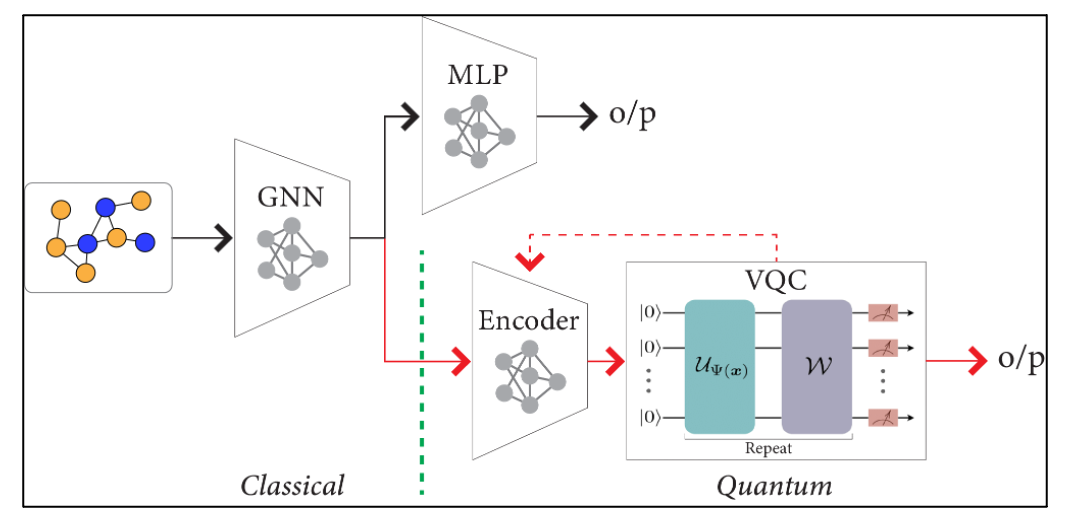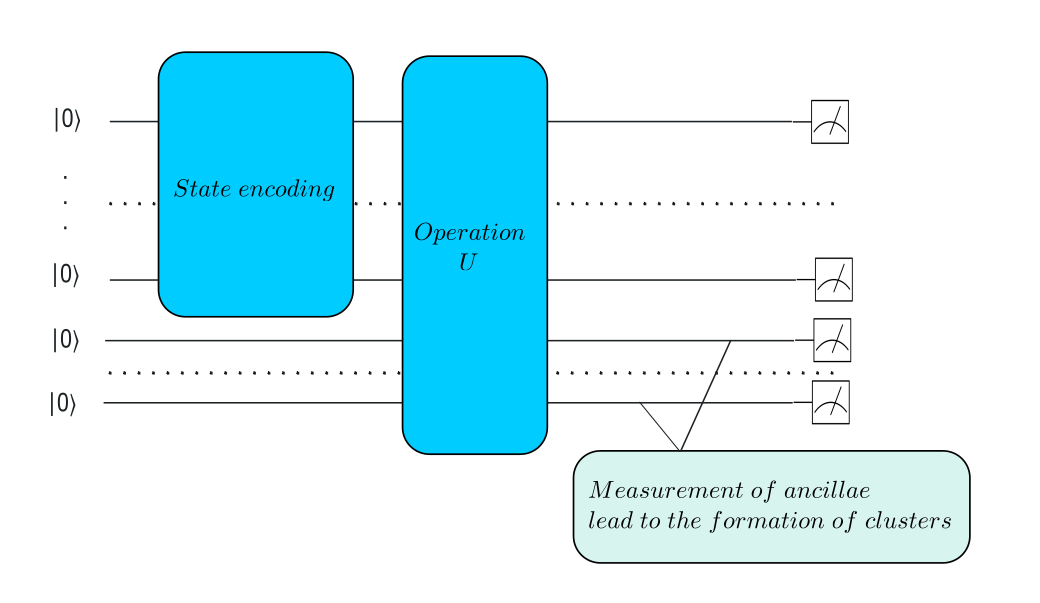Publications
Publications in reversed chronological order.
2023
-
 Hybrid quantum-classical graph neural networks for tumor classification in digital pathology2023
Hybrid quantum-classical graph neural networks for tumor classification in digital pathology2023This paper presents a novel approach in the intersection of quantum computing and machine learning, specifically focusing on the application of a hybrid quantum-classical graph neural network (GNN) for tumor classification in digital pathology. The proposed methodology integrates a Variational Quantum Classifier (VQC) with GNN, exploring two variants: one with fixed pretrained GNN parameters and another with end-to-end training of GNN+VQC. The study reveals that the hybrid model achieves comparable performance to state-of-the-art classical GNNs in weighted precision, recall, and F1-score. Additionally, it demonstrates the efficacy of amplitude encoding in compressing information with a logarithmic number of qubits, outperforming classical compression techniques. The research also highlights the advantages of end-to-end training in enhancing the model’s performance.
-
 Measurement-Based Quantum Clustering AlgorithmsSrushti Patil, Shreya Banerjee, and Prasanta K. Panigrahi2023
Measurement-Based Quantum Clustering AlgorithmsSrushti Patil, Shreya Banerjee, and Prasanta K. Panigrahi2023In this paper, two novel measurement-based clustering algorithms are proposed based on quantum parallelism and entanglement. The Euclidean distance metric is used as a measure of ‘similarity’ between the data points. The first algorithm follows a divisive approach. The second algorithm is based on unsharp measure- ments where we construct the set of effect operators with a Gaussian probability distribution to cluster similar data points. One major advantage of both the pro- posed algorithms is that they are simplistic in nature and easy to implement. We have successfully applied both algorithms on a concentric circle data set where the classical clustering approach fails. It is found that the presented clustering algorithms perform better than the classical divisive one; both in terms of clus- tering and time complexity which is found to be O(kN(logN)^2) for the first and O(N^2) for the second one. Alongside, we also implemented the algorithm on the Churrtiz data set of cities and the Wisconsin breast cancer dataset where we found an accuracy of approximately 97.43% which for the latter case is achieved by the appropriate choice of the variance of the Gaussian window.